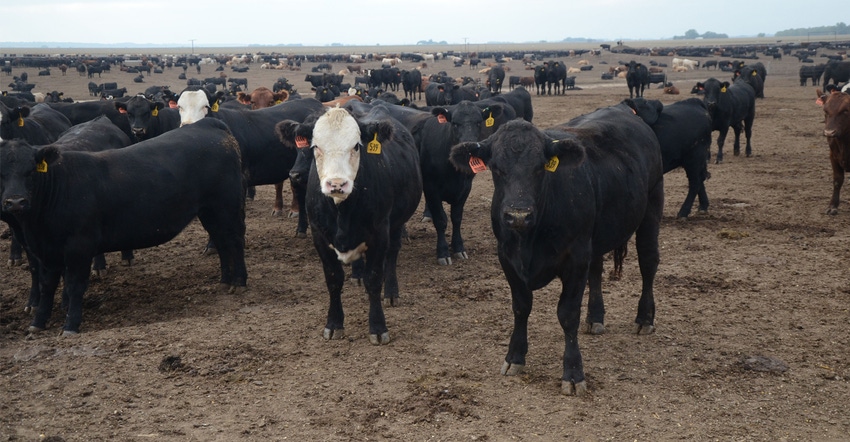November 14, 2017

The beef industry works for the consumer. From the cow-calf producer to the feedlot to the packer, the industry is working toward producing a high-quality, consistent product that consumers expect from the beef industry.
"I get asked a lot what the packer is looking for in the cattle we buy," Bill Munns tells producers during a recent beef quality meeting in Greeley, Colo.
Munns is the director of marketing and product management for JBS. "The short answer is to ensure that consumer preferences are met through the supply chain interaction," he says. "We want what the consumer wants. Whether we want to admit it or not, in the end, we all work for the shopper."
Munns sees a real need for better educating shoppers about the beef they eat. "A lot of times, they are not well educated about what our practices are in the beef industry," he says. "We definitely need to do a better job helping them understand by educating them."
Quality has become a lot more important. "Through the entire supply chain, we all work together to produce what the consumer wants from the cow-calf producer, to the backgrounder, stocker-feeder, feedlot and packer," he says.
"Consumers are looking for a quality product. Because of that, JBS offers a much better return for a higher-quality carcass. USDA graders are at each of our plants. They run the cattle across the grading scale and determine whether they have a Prime-quality carcass, Choice or Select," he says. "The consumer is willing to pay more for a Prime quality carcass, and the relative cut out value of Prime carcasses versus Choice or Select, is worth more."
As an animal gets older, the rib bones will ossify. The most desirable ages for finished cattle are A or B maturity. "A" maturity is 9 to 30 months of age, while B maturity is 30 to 42 months. "Don't feed the cattle too long, and get them out there to 40 to 50 months of age," Munns warns producers. "If you do, we will discount them for maturity. We really like to see the finished cattle under 30 months of age."
Munns says packers like JBS are looking for "soldier-type" cattle that will produce Prime-quality carcasses. "We want uniformity. It makes our operation more efficient on a daily production basis," he says.
"If the cattle come into the feedlot the same shape and size, it just makes everything more efficient for everyone on down the line," he says. "We like it from a production standpoint, but our customers also demand uniformity."
"When a producer brings cattle to us, we want them to be uniform in weight, structure, conformation and muscling, and less than 1,000 pounds in carcass weight," Munns says. "Many of these packing plants were built to handle carcasses from the ’70s. They are not really built to handle carcasses over 1,000 pounds."
When beef carcasses are too heavy, it spells trouble for the plant. "Obviously, we can't have carcasses that touch the floor out of food safety concerns," he says.
Munns says many of their retail customers don't have fully staffed butcher shops and a skilled labor force to cut up meat. "When they buy a box of ribeyes, they want to open the box and find ribeyes uniform in size," he says. "What they don't want to see is a 12-pound ribeye and a 20-pound ribeye in the same box."
Customers are also requesting a leaner product, which means more trim at the packer level. "They want meat with quarter-inch trim that is ready to slice into roasts and steaks at the retail level. It can be portioned out easier," he explains. "What that means is that the yield grade is becoming more relevant to the packer than at the retail level," he says. It could mean some discount for the feeders if the packer has to spend a lot of time trimming the meat to meet quarter-inch specifications.
Clark writes from Potter.
About the Author(s)
You May Also Like




